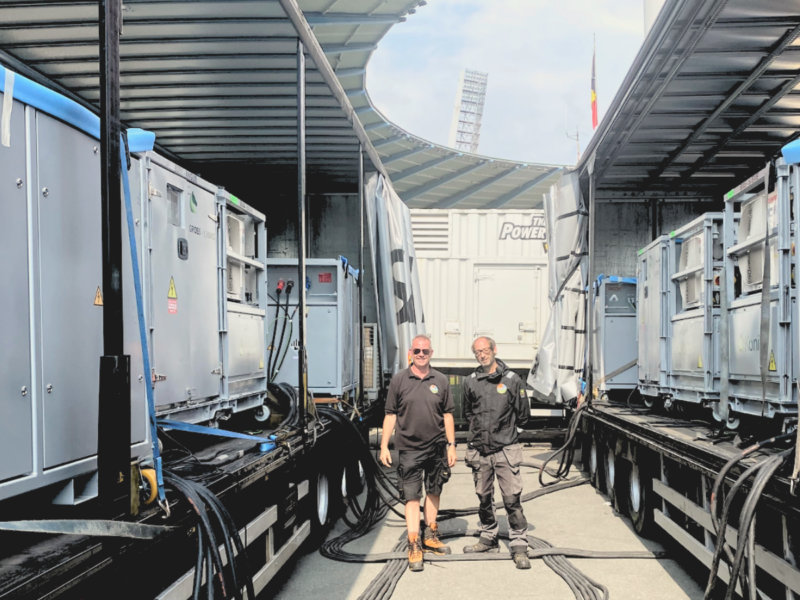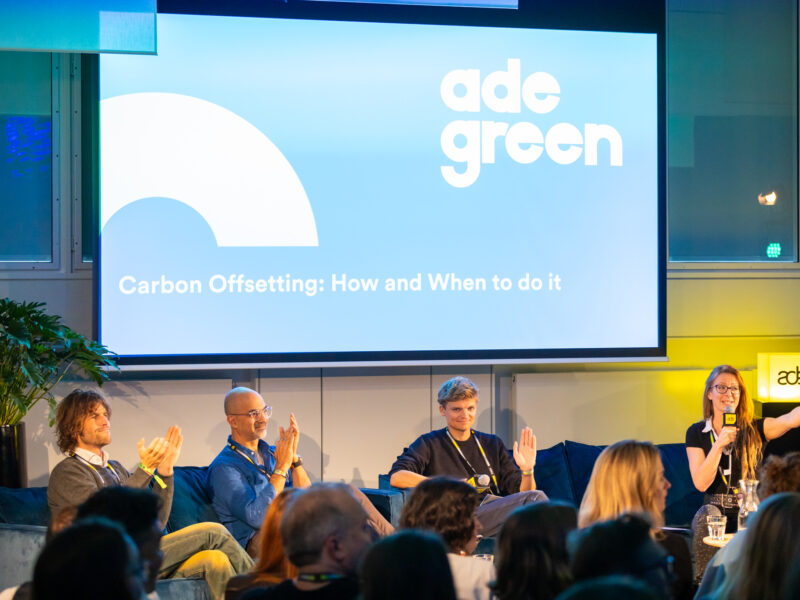
Can cars power events? Tim Benson explains the role of bi-directional charging
This article was written by Tim Benson and originates from Powerful Thinking, read the full piece over here.
Imagine a world in which event-goers arrived in zero emissions electric vehicles and then plugged their car in to start powering the event itself. Simultaneously tackling the issues around audience travel emission and clean energy for events. Impossible? Maybe not!
In this Vision:2025 blog, Tim Benson, Chair of Powerful Thinking, looks at the potential applications of bi-directional EV charging, which allows EVs not only draw power from the grid for charging, but also to export it as a usable AC power source for other applications, in a system known as V2X or vehicle-to-everything. Whilst this technology is still in its infancy V2X systems open up many exciting opportunities for the development of smart cities as well having a role in the temporary event market. Read the blog for more info on how this technology has already been used successfully to power event concessions and what the future holds.

“Much has been made of the supposed impact of electric vehicles (EVs) on the stability and resilience of the National Grid. The most commonly cited problems include their impact on the supply / demand balance and voltage stability, but these are mostly attributable to shortfalls in our transmission network infrastructure rather than anything else. Concerns over the inherent electrical characteristics of EV charging points have further been singled out as a problem, since they can cause both frequency disturbance and harmonic distortion.
However, this seemingly parasitic dynamic between EVs and the national grid may soon become something more symbiotic, as major EV manufacturers including Hyundai, Nissan, Kia, Outlander, MG and Ford, more widely integrate bi-directional charging capabilities into their vehicles. Bi-directional charging is a technology that enables EVs to not only draw power from the grid for charging, but also to export it as a usable AC power source for other applications. Bi-directional chargers use a type of inverter with the ability to both rectify (convert an AC supply to a DC one for recharging) and invert (convert a DC supply to an AC one for exporting). This allows energy stored in an EV’s battery to be fed back into the grid or a building, shared with another vehicle or even to be used for powering everyday electrical consumers. This bi-directional process is controlled by a vehicle’s energy management system (EMS) and will only work when connected to a bi-directional charge point.
V2X or vehicle-to-everything is the overarching term used for exporting the energy stored in an EV’s batteries for external use. This protocol is sometimes further sub-divided according to the end user of the energy supply; for example, V2G (vehicle-to-grid) is where EVs feed back into your DNO’s LV network; V2B (vehicle-to-building) sees energy exported to commercial premises and V2H (vehicle-to-home) to residences; V2V (vehicle-to-vehicle) refers to the sharing of energy between cars, trucks, buses etc and V2L (vehicle-to-load) is where the energy supports any externally connected electrical consumers.
These variations on the V2X protocol are clear evidence of the diverse potential of bi-directional charging systems and how they can be applied to reduce energy costs, lower associated emissions and support network resilience. Research by Mobilize, a sustainable mobility project by the Renault Group, reports that vehicles are typically left unused for up to 90% of the time and yet still loose 50% of their value over just three years. Just imagine the possibilities of using these to export energy back into the grid or to top up the supply to your workplace or home. With the electrification of truck fleets, vehicles that are typically just parked up at event sites could double up as mini battery farms, helping to reduce dependence on diesel generators.
V2X systems will certainly have some role to play in the temporary event market, if applied to suitable applications. The AirQon project, conceived of in the Netherlands, is a prime example. This crowd funded initiative incentivises visitors through ticket discounts, free parking and gifting, to use their vehicles at events to supply power. In 2023 Hyundai supplied a fleet of EVs to the Chettle Village Fete, which powered food concessions, bars and a stage, demonstrating the potential of using EVs as a scalable, temporary energy storage medium.
Whilst this technology opens up many exciting opportunities and will inevitably have a huge part to play in the development of smart cities, it still remains very much in its infancy. We are at least three years away from bi-directional charging systems becoming the norm, both in terms of their uptake by car manufacturers and the availability of compatible charging points across the UK. Questions also remain around the impact on both battery life and performance of more frequent recharge and discharge cycles. And, of course, we need to remember the electrical limitations of an EV’s power output, which generally ranges from 2.4 to 3.6kW, although this can likely be mitigated through the paralleling of vehicles.
However, in the same way that the notion of smart cities blurs the boundaries between electrical consumers and electrical producers, (the aptly named prosumer concept), bi-directional charging could also play a pivotal role in this paradigm shift. Sustainable transport combined with onsite generation will arguably empower audiences to contribute more meaningfully than ever before to reducing the two highest emitters of CO2e at an event, namely audience travel and onsite power generation.”






